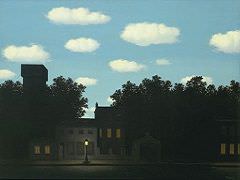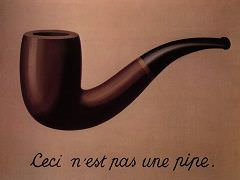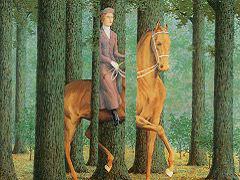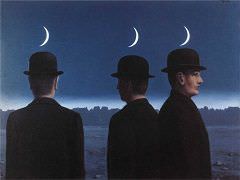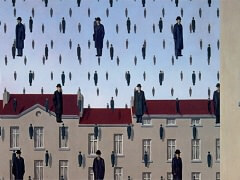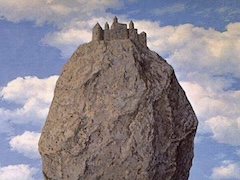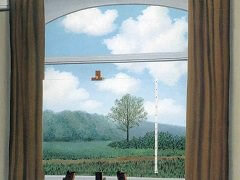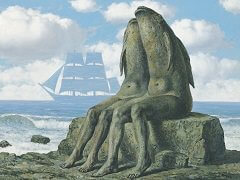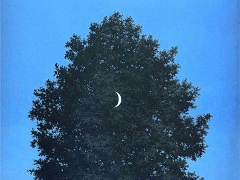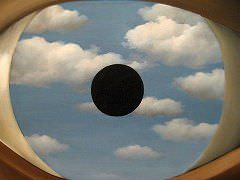Popular Panorama, 1926 by Rene Magritte
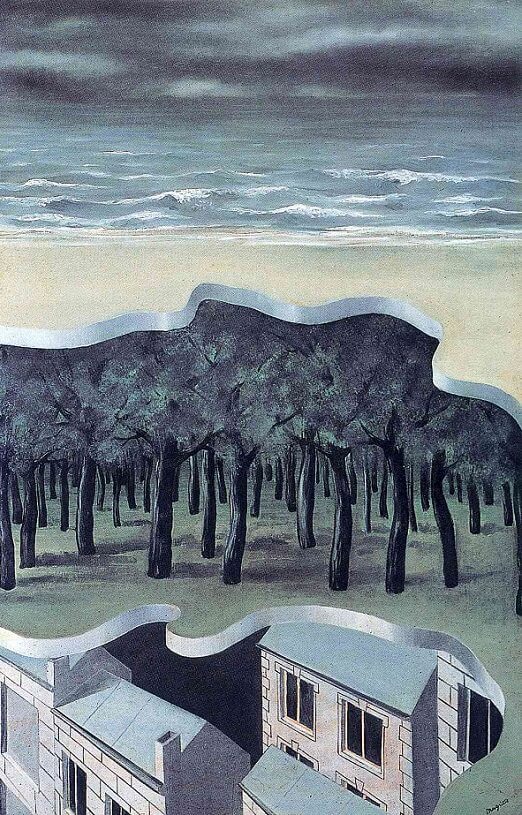
The year 1926, when Magritte was twenty-eight, marked a definite turning point in his work, as has been stated in regard to The Birth of the Idol,
and the landscape, as he saw it in Popular Panorama, was of fundamental importance to his further evolution. Besides having been in E. L. T. Mesens's possession, this canvas was for a
long time owned by Paul Gustaaf van Hecke, Magritte's first art dealer, who took an interest in him and ran the Galerie Le Centaure with Andre de Ridder.
No support at all can be found in Cubism or Futurism for Magritte's unique conception of space here - except that Cubism had opened the way for other attitudes toward space besides the fixed
one of Renaissance perspective. Magritte presents three strata here which form a unit yet are autonomous in regard to perspective. The two surfaces, with sawed, curvilinear edges, are
simultaneously beach and woodland scenes, but they also suggest the materiality of wood, for example; thus the effect is that of a kind of magical box where three aspects of landscape have
been confined but which has been sawed into so they can be visible. Through the superimposition of three elements in the painting - town, woods, sea - a simultaneity has been created to
which shortly afterward, in 1928-30, Magritte gave still greater emphasis in strangely framed fragments of these and other motifs. The tonal color, which has been applied very thinly, is a
dull greenish gray, creating the rather oppressive and somber atmosphere typical of this period.
Magritte's vision of trees, which fascinated him his whole life, is very important. What interested him most here are the trunks - squat, warped, powerful, lacking the tranquillity they
later acquired in his work. They shoot straight out of the surface, without any roots; years later, too, Magritte ignored the fact that trees have roots. Does this phenomenon perhaps have a c
onnection with the fact that Magritte lived in houses but never took root in them, never considered where he lived as a matter of importance and could move from place to place with ease?


